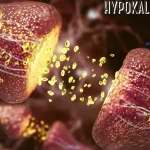More than one third of the deaths globally every year are from Cardiovascular diseases (CVDs), which make them a leading cause of mortality. Heart health must be prioritized as it has a big impact on your overall wellbeing by reducing the risk of life threatening things like a heart attack, stroke and heart failure. This article discusses the role of heart health, prevention and treatment options of CVDs with an emphasis on the treatment of aortic valve stenosis.
Cardiovascular Diseases Understanding
CVD happens when a disorder affects your heart and circulatory system, including coronary artery disease, high blood pressure (hypertension), heart failure, or irregular heartbeat (arrhythmias). Aortic stenosis is one of the more common among these because the aortic valve is narrowed and restricts blood flow from the heart to the rest of the body. Leaving your heart valve condition untreated can result in irreversible health disorders, including heart failure, and early detection and quick medical treatment are crucial.
Preventing Cardiovascular diseases
But this heart disease in women can be prevented by making lifestyle changes and having health checks regularly. Here are key strategies for reducing the risk of CVD:
Heart-Healthy Diet: Fruits, vegetables, whole grains, lean proteins and unsaturated fats can help keep cholesterol levels and blood pressure under control, and both are essential to prevent heart disease.
Regular Exercise: Doing at least 30 minutes of aerobic activity every day, like brisk walking, cycling or swimming, strengthens cardiovascular health and helps lower risk for heart problems.
Quit Smoking: CVDs are a main concern of smoking. Stopping smoking cuts the risk of heart disease by quitewater, improves lung function and enhances circulation.
Stress Management: When you’re under high stress, it raises your blood pressure, putting you at greater risk for heart disease. Yoga, meditation, and some deep breathing exercises can lower stress and in turn protect heart health.
Routine Screenings: Regular health check ups such as blood pressure, cholesterol and blood sugar checks can detect early signs of cardiovascular problems that can be treated early.
Cardiovascular Disease Treatment Options
CVDs have a variety of treatments available depending on the particular condition and level it’s on. These diseases can usually be well managed by lifestyle changes and medications in most cases. But even more severe conditions might need invasive procedures.
One example is that surgical intervention is necessary for aortic valve stenosis, for instance. In some cases, it can mean having a new aortic valve placed through traditional surgery, or through less invasive transcatheter aortic valve replacement (TAVR). TAVR is particularly helpful for patients that aren’t candidates for open heart surgery because TAVR restores normal blood flow, alleviates symptoms and improves quality of life.
Combating cardiovascular diseases globally
Around the world, countries are trying to boost cardiovascular awareness and heart healthy living. Public education campaigns and policies that promote heartful behavior exist that governments and healthcare systems are focusing on. It’s not only due to great advances in medical technology that even the most complex cardiovascular conditions are now treatable.
In developed countries, heart disease is helped to reduce its burden through widespread access to sophisticated medical procedures and preventive health care programs. At the same time, cardiac care services in developing nations are gradually becoming better, and life saving treatments are becoming more and more available to their populations. However, these are efforts in tandem with increasing public awareness of these CVDs to help lower the global burden that CVDs have.
Conclusion
Preventing cardiovascular diseases is extremely important for heart health, as many of these diseases can be life threatening. Reduction of risk factors involves adopting heart healthy habits such as a balanced diet, regular exercise and stress management. Modern treatment methods such as TAVR held promise for those who have more complex heart conditions and help improve the life for these patients. Indeed, both prevention and advanced treatments eventually become key elements of global initiatives to fight against cardiovascular diseases and improve one’s heart health.







